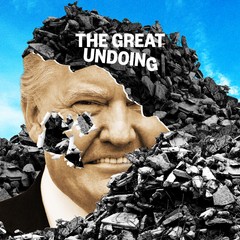Kendall Jose played an integral role in stopping border wall construction on the Tohono O'odham Nation. Photo: Nathaniel Janowitz
The traditional O'odham homelands and the Sky Islands both transcend the U.S. and Mexico border. Map Credit: Corin Trachtman
Critical migration route
Border wall construction cuts into the Sky Islands like a "scar." Photo: Nathaniel Janowitz
The view from the Mexican side of the 30 foot high border wall at the Cuenca Los Ojos ranch. Credit: Nathaniel Janowitz
A ‘bottleneck’ for wildlife
The wall splits the San Bernardino Wildlife Refuge and the Cuenca Los Ojos ranches, and disrupts the migration routes of numerous species in the region. Credit. Nathaniel Janowitz
“You'll see this at zoos, you'll see a lot of pacing along the walls,” says Traphagen. It’s an indication of stress and confusion from the animals as their natural habitats are thrown out of kilter.This is just one of the immediately visible effects of the wall in what he calls the “meeting ground of major elements of western North America.”“People sometimes think that, oh, this is the border, but in fact, this is the heartland of the North American continent because you find a little bit of everything here. It's the only place where the jaguar and the black bear share the same paths, walk the same canyons,” says Traphagen. “It's an evolutionary highway.”Back in Chukut Kuk, Kendall Jose calls the notion that the government had the right to build such a large structure that affected animals in areas that the O’odham and other Native American groups have called home for millenniums, “a Western idea of thinking.”“For the O’odham people, and I think for Native people in general, we don’t own the land; we’re caretakers of the land,” he says, noting that while he and his ancestors have been able to adapt as the times have changed, “the animals don't have that luxury because they just go follow nature.”“So the animals have to be able to freely do that. And if they can’t, we're setting them up to fail.”“You'll see this at zoos, you'll see a lot of pacing along the walls.”

